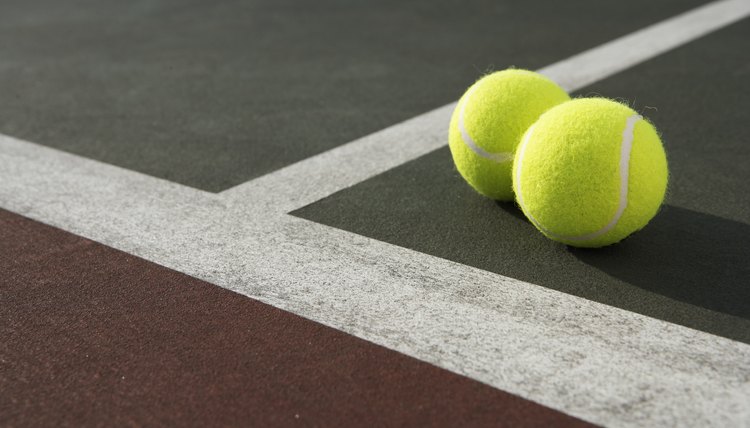What Is Out of Bounds on a Tennis Court?

Playing tennis is a great way to stay fit at any age. It makes sense to learn the rules for both singles and doubles games to increase your options for getting on the court. The rules for out of bounds are the same in singles and doubles matches, but the court lines are different.
Baselines
The baselines are at either end of the 78-foot-long rectangular court, and any ball that lands beyond a baseline is considered out of bounds. If the ball lands on the baseline, it is considered in bounds and is still in play.
Singles Sideline
The singles court is slightly narrower than the doubles court, and singles sidelines determine the side boundaries. The United States Tennis Association follows the rules of the International Tennis Federation, the world governing body of tennis. ITF rules require a singles court to be 27 feet wide. Doubles sidelines are drawn outside the singles lines and may be ignored during singles matches. A ball landing outside the singles sidelines is out of bounds, and any ball landing within or on the singles sidelines is considered within bounds and must be played.
Doubles Sideline
The doubles court is 36 feet by 78 feet. Doubles sidelines run parallel to and outside the singles sidelines on the court. During a doubles match, if the ball lands outside the doubles sideline, it is out of bounds. Landing on or inside the doubles sidelines means the ball is still in play.
Service and Center Lines
A tennis court has two servicelines, one on each side of the court, parallel to the net and halfway between the net and the baseline. A center serviceline, or centerline, midway between and parallel to the two singles sidelines divides the service courts. A serve must land within the opponent's service court opposite to the side the ball was served from -- the service court across the net and diagonal to the server. If the serve lands on a sideline or serviceline, it is considered in play in the court bounded by the line. If the serve clears the net and lands on the centerline, it is within bounds and must be played. If the serve lands in the wrong service court, the server loses the point.
References
Writer Bio
Benna Crawford has been a journalist and New York-based writer since 1997. Her work has appeared in USA Today, the San Francisco Chronicle, The New York Times, and in professional journals and trade publications. Crawford has a degree in theater, is a certified Prana Yoga instructor, and writes about fitness, performing and decorative arts, culture, sports, business and education .
